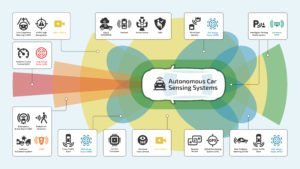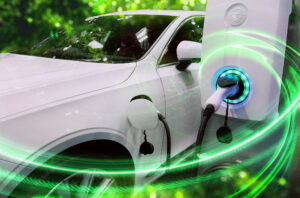Enabling High-Speed Connectivity for Autonomous Vehicles
As the automotive industry accelerates toward higher levels of autonomy, the need for high-speed data transmission within vehicles is crucial. Optical interconnects offer the bandwidth necessary to support the vast data streams generated by sensors, cameras, LiDAR, and radar systems. Our high-reliability wide-temperature range 980nm VCSELs deliver the performance, EMI immunity, and durability required for next-generation vehicle architectures. As the automotive market transitions to software-defined vehicles and zonal architectures, Inneos is positioned to provide the high-speed, high-reliability components that will drive innovation in autonomous and electric vehicle systems.




